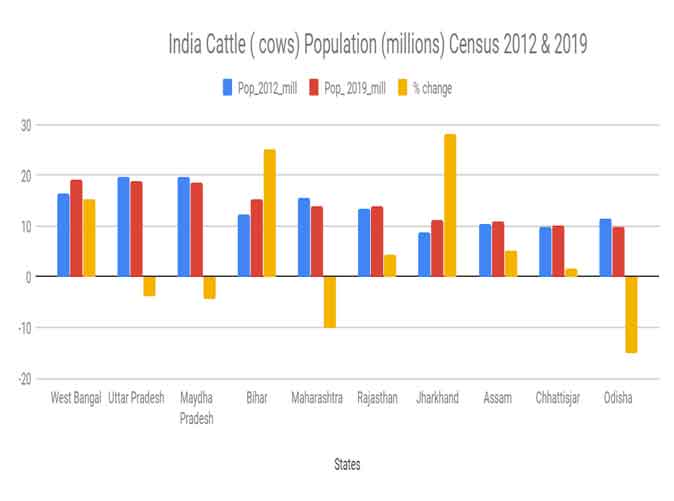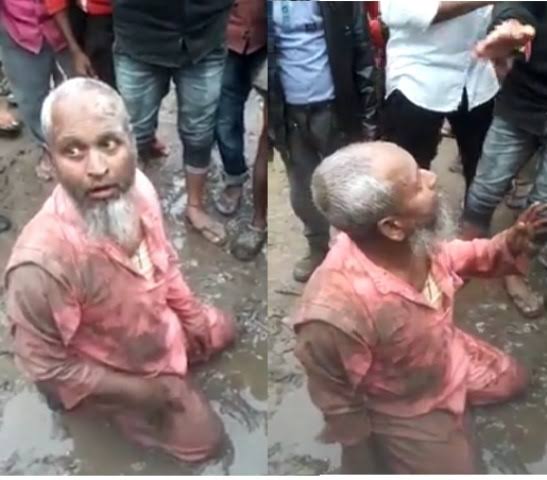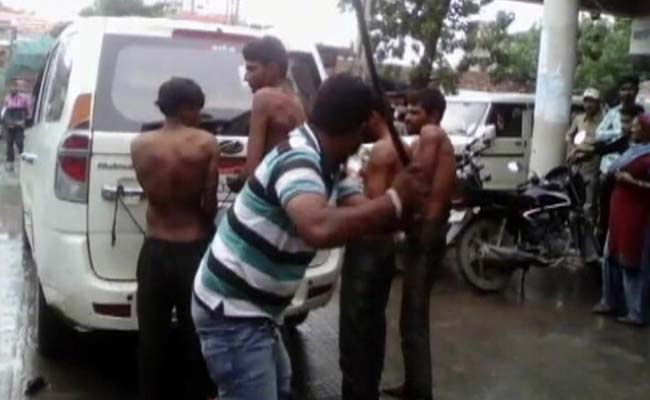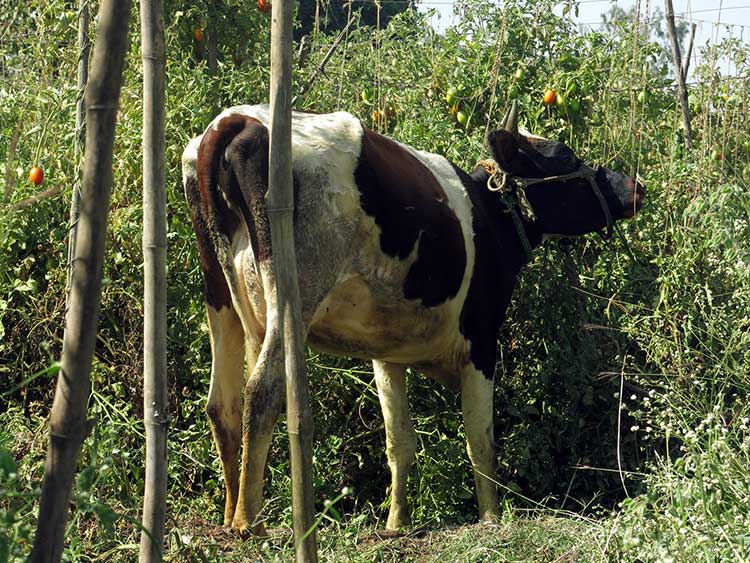
“Whatever the majority wants should happen. That’s democracy, right?” said a friend to me the other day when we were sitting around in a group and the discussion took a few political detours into the question of beef eating and cow slaughter. It brought to my mind Dr B.R. Ambdedkar’s criticism of the “Divine Right of the Majority to rule the minorities according to the wishes of the majority”, which according to him had become a cornerstone of ‘Indian nationalism’ itself: an unwillingness to share power.
But it didn’t start so seriously. One of them brought up this news item as a joke and I found it quite funny, fake news or not. After a round of banter, I mentioned that stray cattle is a problem not just for Modiji’s ‘dream’ Vande Bharat super-train project but for a lot of farmers all around the country because of the damage they cause. Pat came the replies:
‘The government should build cow shelters’
‘Penalize the cow owner’
‘This is India bhai, what to do’
Now I, being more of the anti-Modiji type, suggested that how about we stop prosecuting cow slaughter under terror laws (we live in Uttar Pradesh), and let those who consume beef keep a check on the population of the venerated bovine, as happens with chicken and goats. Why have an economically useless animal going around when it is of itself a significant source of nutrition and a part of the food culture of other communities? Their reactions were unsurprising and typical, but one merits special mention: ‘It’s what most people want’
What I want to focus on from that little anecdote is the concept of democracy as ‘majority rules’. It’s logical that those who feel ‘in’ this group will be more interested in upholding such a viewpoint at the expense of the other aspect of democracy, i.e., protecting the rights of ‘minorities’ from the arbitrary impositions of the ‘majority’ culture as the sole ‘national’ culture. Firstly, it is important to understand what ‘majority’ means when such debates crop up in private gatherings and public rhetoric. It usually refers to an imagined, pre-existing ‘Hindu majority’ in the country and not to the mandate pertaining to a particular election. In this narrative, all the hundreds of millions of people in this alleged ‘majority’, sliced and diced as they are into various communities, languages, regions, castes, and gender have some fixed desires and interests. And the party that has been elected by the ‘majority’ is therefore justified in enacting whatever this majority ‘wants’.
Cow protection: An ‘us vs. them’ ruse?
The word ‘majority’ is a clever rhetorical construction whose purpose is to project the interests and value systems of the Brahmanical elite as a ‘common desire’. A lot has been researched and written about how the ‘Hindu majority’ was constructed in the colonial era, with the politics of numerical strength becoming dominant and one of the core axes of all debates around power sharing in the ‘free’ country of the future. The political leadership of the traditional ‘upper castes’ that segued into the ‘postcolonial’ modern India with much of their socio-cultural and economic dominance intact had by this time cemented their (more-or-less successful) cooptation of various caste and tribal groups into a common ‘Hindu’ identity. The hegemony of savarna castes and classes allows them to channel their interests through the construct of something like ‘Hindu society’ which Dr. Ambedkar has said “does not exist… except when there is a Hindu-Muslim riot”.
The call for ‘cow protection’ is a typical example of an ‘us vs. them’ rhetoric. It rallies traditionally agrarian caste groups included in the OBCs (Other Backward Classes) by making them feel ‘included’ in a core aspect of the Brahmanical religion. Scholars including Dr. B.R. Ambedkar have established that consuming and sacrificing cows was indeed an aspect of the much-hyped ‘Vedic times’ and that the shifting mode of production, i.e., the transition away from a nomadic to settled agricultural society and the rise of alternative religions like Buddhism forced a shift in strategy on part of what is today being understood as ‘Hinduism’. It pivoted to a complete renunciation of cattle sacrifice and upheld the cow as a divine animal in its Puranic mythologies, while figures like a young Krishna and his adoptive family in their idyllic rural settings further bolstered the claim to an ‘inclusive’ pantheon and captured the imagination and religious affiliations of these communities.
The stigma attached to eating beef which is predicated on notions of ‘impurity’, ‘pollution’, and ‘sin’ on one hand and the ‘sacredness’ of the cow on the other also fulfilled the social and political function of isolating and oppressing the “untouchables”: recognized today as Scheduled Castes or Dalits. This association is also used to target Muslims as those who indulge in the consumption and ‘trafficking’ of cows to be slaughtered and to profit off this. The result is the scandal of ‘gau rakshaks’ (cow protectors) roaming around with lethal intent and lynching Muslim men, with the State turning a blind eye. It provides a pretext to create a spectacle of Muslim powerlessness and ‘Hindu’ dominance, just like a bulldozer running over Muslim homes: sometimes for alleged ‘rioting’, and at others for interfaith marriages.
Imposing the ‘will of the majority’ is undemocratic
Associating cow protection with the ‘sentiments’ and ‘will’ of a claimed majority is a threatening demand for other communities to live by the values of the powerful groups of society. While the consumption of beef may not always have been a matter of choice or a ‘delicacy’ among the Dalits or Adivasis, it is a part of their history and culture and whether to continue with it should be their own choice. Those genuinely concerned for the cow or other animals can always democratically organize and persuade others peacefully. What they cannot, and should not, be allowed to do is to impose their demands on those who disagree.
It should be clearly stated and recognized that no group or person is obliged to live by or ‘respect’ the culture of another. The law and the state should work to protect people, not ideas or a ‘way of life’. And it cannot be forgotten that protecting and enriching the culture and well-being of minorities and socially marginalized groups is an essential aspect of a democratic polity. The concept of the ‘will of the majority’, basic and crude as it is, is limited to a parliamentary and electoral sense and is a means of achieving consensus and peaceful transfers of power, not of coercion. The task of building democracy from the ‘ground up’ still remains very much at hand.
Arjun Banerjee is a writer and journalist.














































